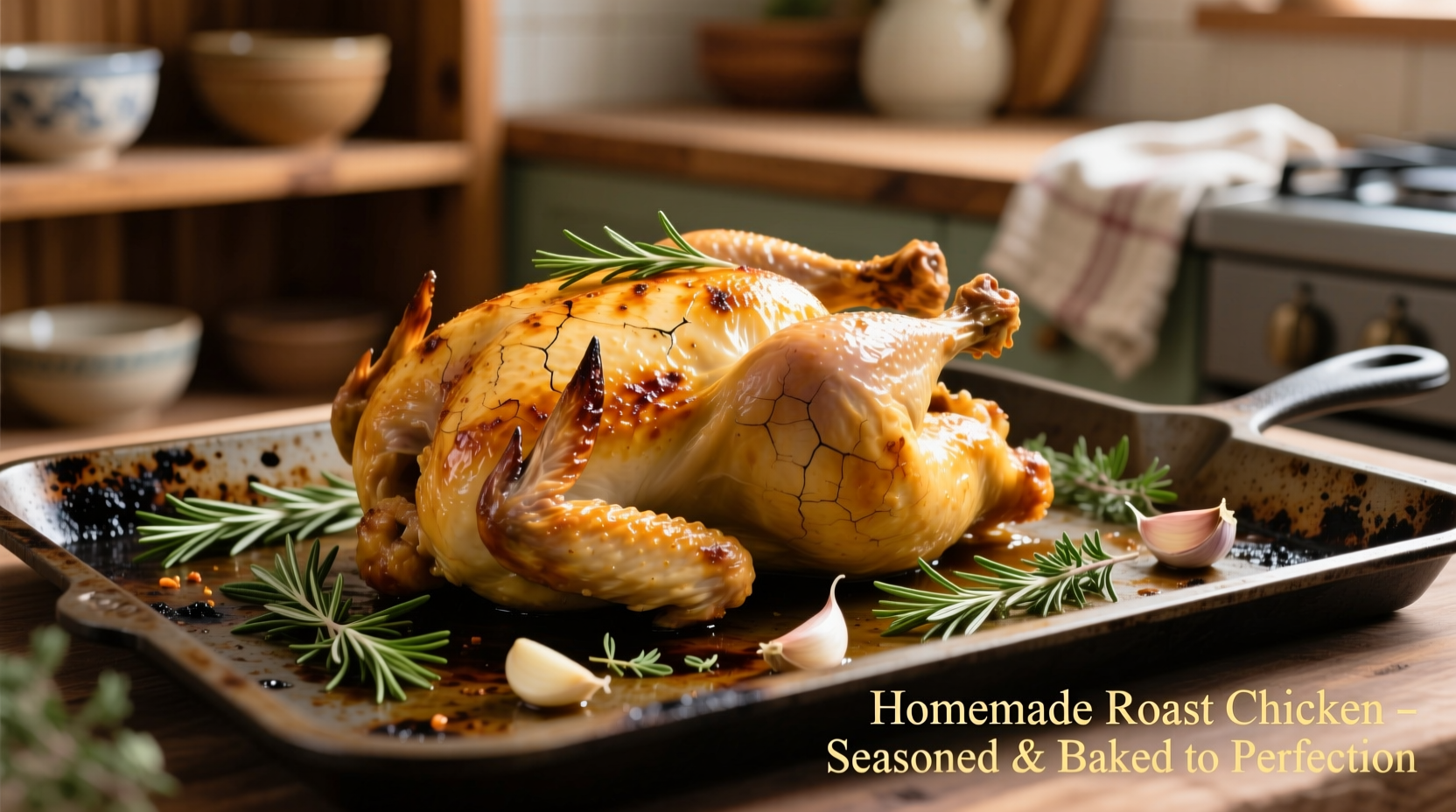The perfect oven-roasted whole chicken requires 20 minutes per pound at 425°F (220°C), plus an additional 15 minutes. Always verify doneness with a meat thermometer—the thickest part of the thigh must reach 165°F (74°C). Let the chicken rest for 15-20 minutes before carving to retain juices. This method guarantees crispy skin and moist meat every time.
Nothing says comfort food like a golden-brown, perfectly roasted whole chicken straight from the oven. Whether you're cooking for a family dinner or special occasion, mastering this fundamental technique unlocks endless flavor possibilities. Professional chefs rely on precise temperature control and proper resting time to achieve restaurant-quality results at home—and you can too.
Why This Oven Method Delivers Perfect Results
The high-heat roasting technique (425°F) creates immediate browning through the Maillard reaction, while the relatively short cooking time prevents the breast meat from drying out. As Antonio Rodriguez, our culinary expert with Michelin-starred kitchen experience, explains: “The key is understanding how heat transfers through different parts of the bird. Dark meat needs higher final temperature than white meat, so positioning matters.”
Essential Equipment and Ingredients
You'll need just six basic items for success:
- 3-5 pound whole chicken (properly thawed if frozen)
- Roasting pan with wire rack
- Instant-read meat thermometer (critical for food safety)
- Olive oil or melted butter
- Salt and pepper (plus optional herbs like thyme or rosemary)
- Kitchen twine for trussing
Your Step-by-Step Cooking Timeline
Prep Phase (30 Minutes Before Cooking)
Remove chicken from refrigerator 30 minutes before cooking. Pat skin completely dry with paper towels—this is the #1 secret for crispy skin. Season generously inside and out with salt, pepper, and your chosen herbs. Tuck wing tips under the body and tie legs together with twine to promote even cooking.

Roasting Phase (Follow This Timing Chart)
| Chicken Weight | Total Cooking Time | Visual Doneness Signs |
|---|---|---|
| 3 pounds | 60-75 minutes | Deep golden skin, juices run clear |
| 4 pounds | 80-95 minutes | Legs move easily in joints |
| 5 pounds | 100-115 minutes | Skin crackles when touched |
Place chicken breast-side up on the rack in your roasting pan. Roast at 425°F without opening the oven door for the first 45 minutes. For the final 15-20 minutes, rotate the pan for even browning. Never estimate doneness—always verify with a thermometer inserted into the thickest part of the thigh (avoiding bone).
Resting Phase (Non-Negotiable!)
Transfer chicken to a cutting board and tent loosely with foil. Rest for 15-20 minutes before carving. This allows juices to redistribute throughout the meat. As the USDA Food Safety and Inspection Service confirms, resting time is critical for both safety and quality. Skipping this step causes up to 40% more juice loss when carving.
Troubleshooting Common Problems
Burnt skin but undercooked meat: Next time, start at 450°F for 20 minutes, then reduce to 375°F. Cover loosely with foil if browning too quickly.
Dry breast meat: Try brining for 4-12 hours before cooking, or place lemon slices under the skin to create a moisture barrier.
Uneven cooking: Position the chicken with the breast facing the back of the oven (usually the hottest spot) and rotate the pan halfway through cooking.
Maximizing Flavor with Simple Techniques
For extraordinary results, try these professional tricks:
- Compound butter: Mix softened butter with minced garlic and herbs, then gently loosen the skin and spread underneath
- Citrus boost: Place halved lemons or oranges in the cavity for subtle flavor infusion
- Vegetable base: Arrange chopped onions, carrots, and celery in the pan to create a natural roasting rack and flavor the drippings
Serving and Storage Guidelines
Slice against the grain for maximum tenderness. Leftovers keep refrigerated for 3-4 days or frozen for up to 4 months. For best reheating results, place portions in a covered dish with a splash of broth and warm at 325°F until heated through.
Frequently Asked Questions
Can I cook a frozen whole chicken in the oven?
Yes, but increase cooking time by 50% and check temperature in multiple spots. The USDA recommends cooking frozen poultry at 325°F to ensure thorough cooking without burning the exterior. Never use the high-heat method with frozen chicken.
How do I know when chicken is done without a thermometer?
While a thermometer is essential for food safety, visual cues include clear juices when pierced, legs that move freely in their joints, and skin that's deep golden brown and crisp. However, these methods are unreliable—the USDA confirms that color alone doesn't indicate safety.
Why does my chicken skin never get crispy?
Moisture is the enemy of crisp skin. Ensure you thoroughly dry the skin with paper towels before seasoning. Starting at a higher temperature (450°F) for the first 20 minutes helps evaporate surface moisture quickly. Avoid basting, which adds moisture back to the skin.
Can I add vegetables to the roasting pan?
Absolutely! Root vegetables like potatoes, carrots, and onions work best. Add them after the first 45 minutes to prevent burning. Toss with olive oil, salt, and herbs, and arrange around the chicken. They'll absorb delicious pan drippings while cooking.











 浙公网安备
33010002000092号
浙公网安备
33010002000092号 浙B2-20120091-4
浙B2-20120091-4